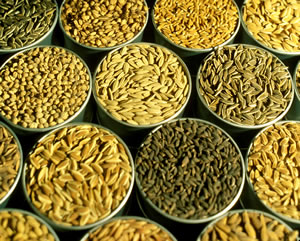How to select rice varieties
 Use healthy seeds of a locally adapted variety to get a good crop that has high yield potential and a good market price.
Use healthy seeds of a locally adapted variety to get a good crop that has high yield potential and a good market price.
Each rice growing country should have a list of released varieties within the country.
IRRI provides small quantities of seeds on demand to any individual or organization anywhere in the world for the purposes of research, breeding, or training for food and agriculture.
Characteristics
Rice varieties should have
- Good grain quality (especially cooking characteristics, color, shape, taste and aroma, and head rice recovery)
- High market price
- Optimum yield potential and stability over seasons
- Maximum tillering capacity for weed competition
- Resistance or tolerance to major diseases, insects, and other stresses (i.e. drought and flood) of the area
- The right growth duration (maturity length) to match the season
- Avoid varieties that need to be planted or harvested earlier or later than surrounding rice fields to minimize pest damage (e.g., birds during maturation), and growth problems during times of harmful environmental conditions (e.g., late-maturing varieties running out of water)
- Resistance to lodging under normal farmer management
Factors affecting crop management, such as soil type, planting method (e.g. some varieties are better for direct seeding), fertilizer efficiency, amount of rainfall, climate, disease pressure, should also be considered in selecting varieties.









